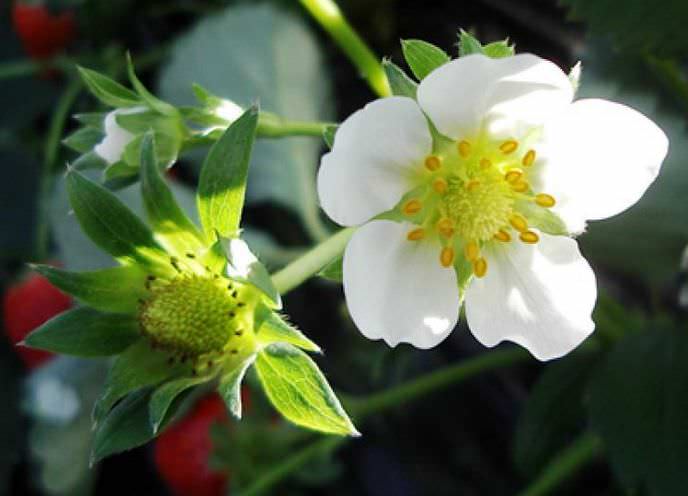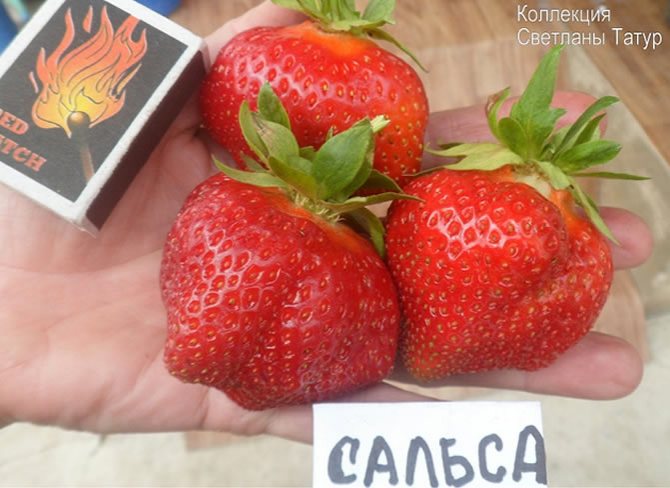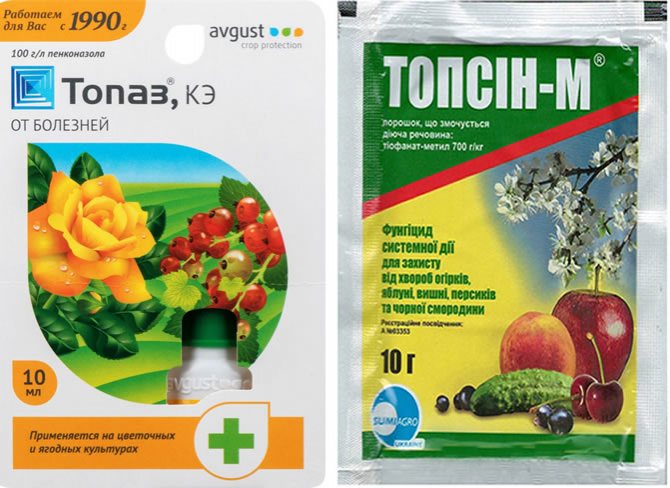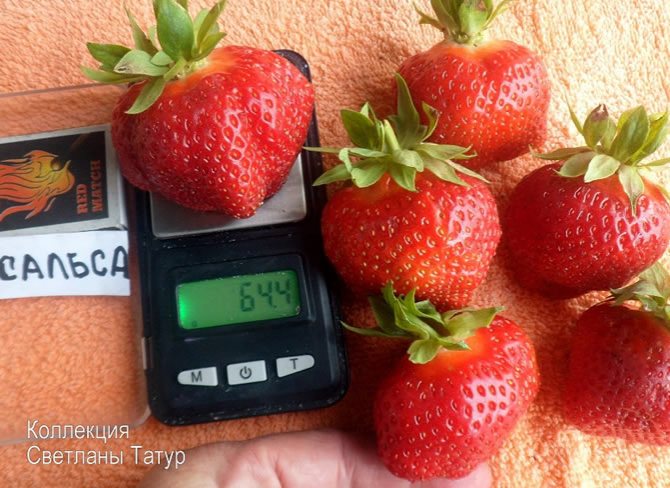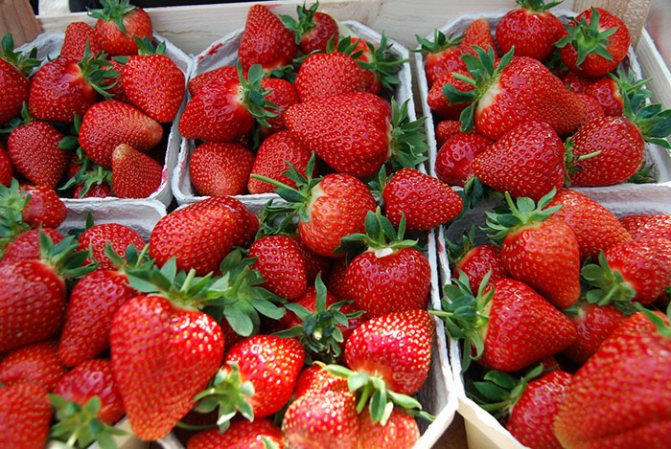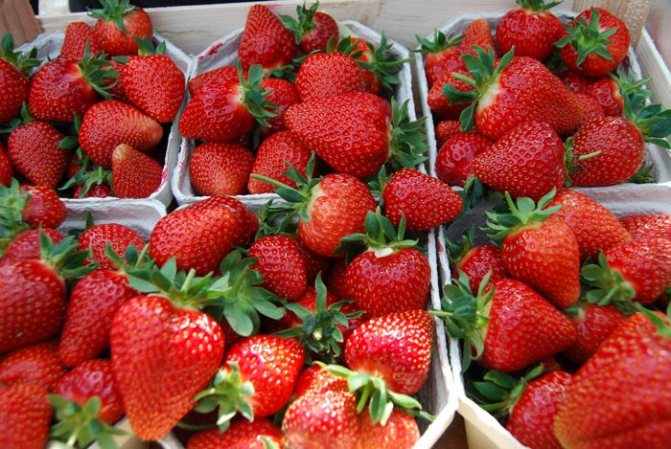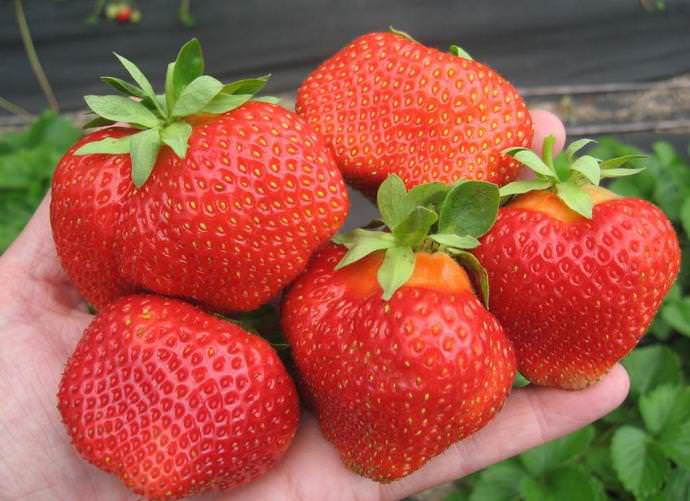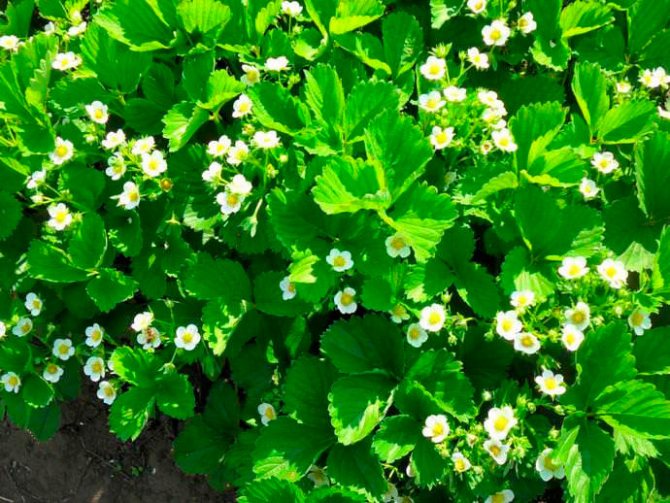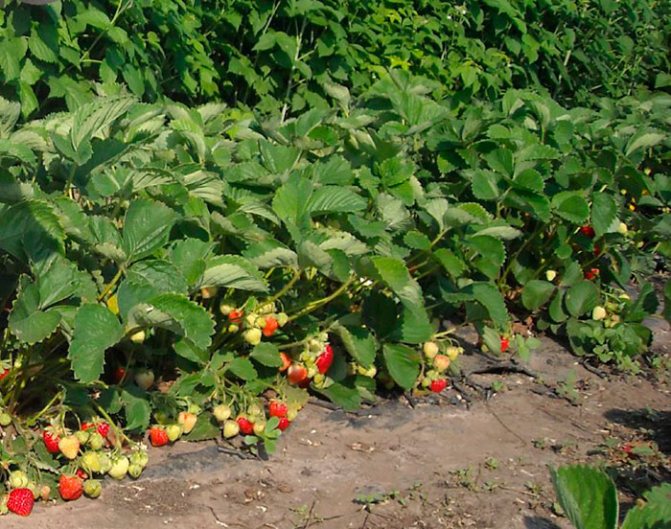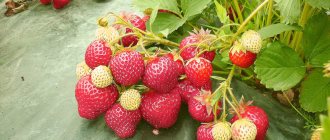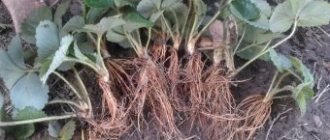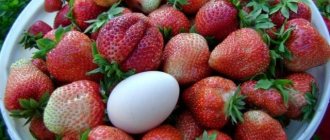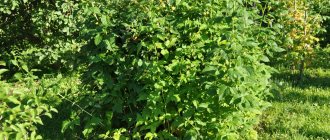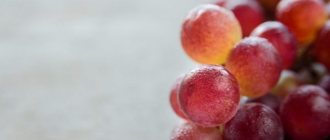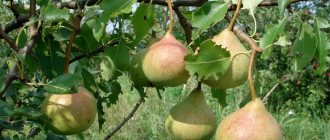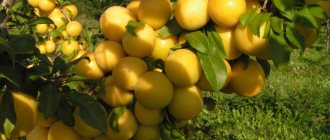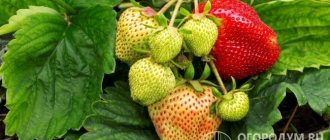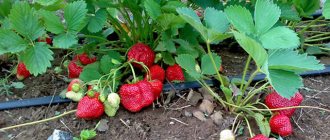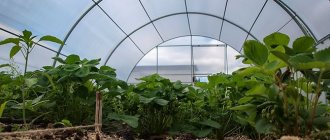Late-ripening strawberry varieties, as a rule, are distinguished by their vitality and productivity. A worthy representative of this category is the Salsa strawberry variety, bred in 1988 by Dutch breeders. For several decades, it has been eagerly cultivated by amateur gardeners and owners of small farms.
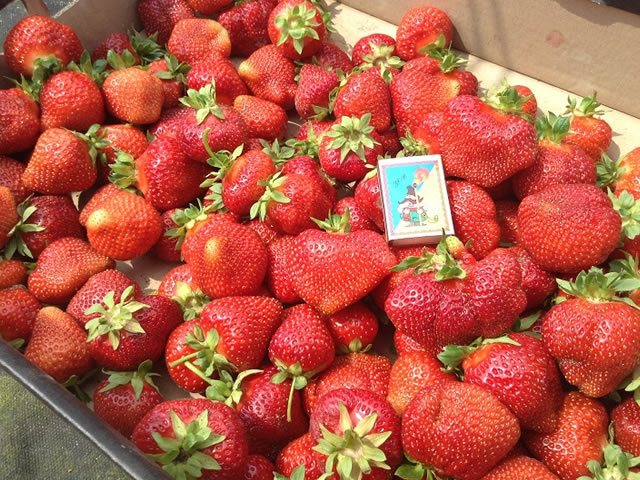
Description and characteristics of strawberry salsa
Salsa strawberry variety - late. Brought it out in the Netherlands, 1988. It has a good yield and is unpretentious. Strawberries are tall, erect. Her mustache is strong, they grow in large volume. The foliage is light green, the flowers and anthers are large.
The yield of Salsa is large, the fruits are large, their peel is thin, bright red. The pulp of the fruit is light pink in color, of moderate density, fleshy, secretes a lot of juice. The fruits can be eaten fresh, as well as for making something sweet or for freezing.
The berry can only be transported over short distances - it is poorly stored. By weight, fruits can reach 25-35 grams, some can weigh 50 grams. The yield reaches about 1 kilogram from one bush. The variety is highly resistant to powdery mildew, verticillary wilt, susceptible to late blight, gray rot is also very harmful to the plant. The approximate fruiting time is 3-4 years.
Description of strawberry Salsa: strawberry bushes are tall and strong. The leaves are light green, the peduncles are tall. Fruits are voluminous, red in color, rounded-conical or leveled.
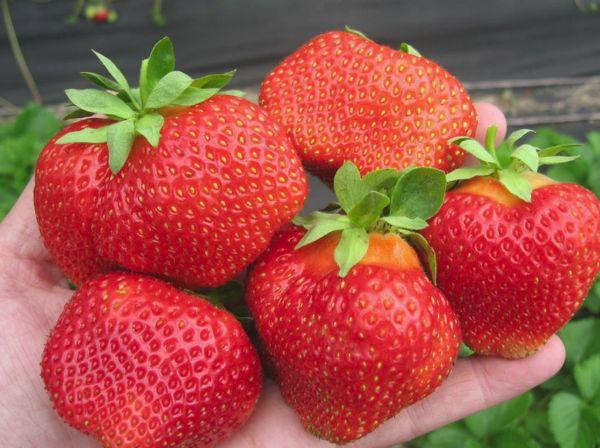

Negative and positive aspects
Positive sides:
- high-yielding variety;
- late maturity variety resistant to frost;
- tolerates various weather conditions;
- the presence of immunity to diseases - verticillium and powdery mildew are not dangerous for this variety;
- large fruits.
Ripe berries have a pleasant smell, characteristic shine, rich, pleasant taste. With good care, fruits can weigh, on average, 35-37 grams. Also, strawberries contain vitamins, enriched with minerals and trace elements. The fruits can be eaten not only canned, but also fresh. Heat treatment and freezing of the product do not violate their useful properties.
Negative sides:
- fruits are not adapted for long-distance transportation, but are quite suitable for sale in the local market;
- the variety is not resistant to chlorosis.
Features of growing varieties
In order for this variety to grow well, bring a harvest, you need to choose the right place for planting it.
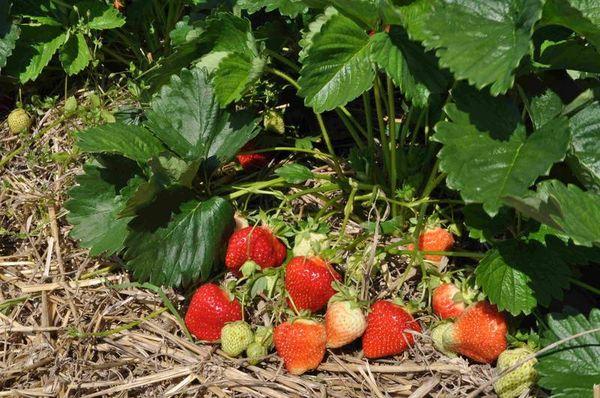

Choice of time and place
Strawberry Salsa can grow and yield well in any soil. But, despite this, the yield depends entirely on fertilization. A good harvest can be expected in the country, where the soil is light or medium, and has an acidity of 5.0-6.5 pH.
When preparing a site for planting, organic matter is added to the soil - on average, 5-6 kilograms, and mineral fertilizers - on average, 40 grams per 1 square meter.
Preparation of planting material
For planting, you need to select bushes with developed roots so that there are more than 7-10 branches. The terrestrial part should contain 2-3 young, developed leaves. Before planting, you can roll the roots in a mixture of soil with peat or humus at the rate of 0.5 part of humus (vermicompost, peat) and 0.5 part of black soil or clay.
See also
Description and characteristics of Mashenka strawberries, cultivation and reproductionRead
It is necessary to prepare a mixture, the density of which resembles the consistency of sour cream. Next, the seedlings are placed in a box covered with polyethylene, and sent to the basement for a couple of days, where the temperature is + 3- + 5 degrees. To prevent the seedlings from drying out, they are also covered with polyethylene on top.
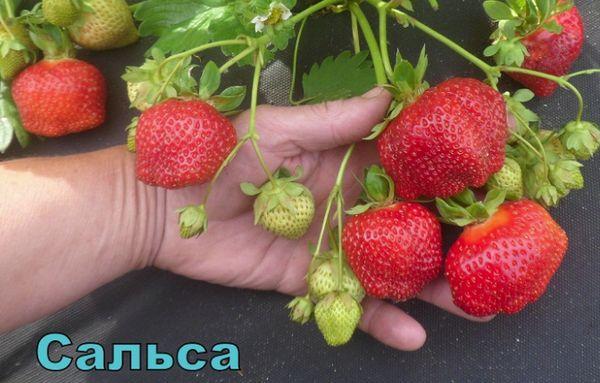

Landing technology
Plants need to be planted in prepared soil, which settles after digging. An experienced gardener will be able to correctly determine the time to plant a crop. The most suitable is August.
You do not need to plant often. There should be a distance of 30 centimeters between the plants, and up to 40 centimeters between the rows. For one square meter, on average, there are 4 bushes. Due to this planting, the plant is well ventilated, moisture does not stagnate, does not have dampness and warms up well.
Landing
Planting is recommended in late July and early August. Strawberries should have time to form flower stalks and get stronger before frost. For planting, sunny open areas are chosen where rainwater accumulation is impossible. It is better to play it safe and raise the ridges, as Salsa can get sick with root rot when moisture stagnates.
The variety will grow in any area, but large, tasty and productive strawberries will only be on fertile land. They improve the structure of the soil immediately when preparing the beds. Acidic soil is neutralized with dolomite flour or lime. Dolomite flour is preferable because additionally enriches the soil with magnesium. The humus introduced should not be fresh, strawberry Salsa does not like this. The amount of organic matter introduced depends on the level of soil fertility. On average, a bucket of manure per square meter is required. Ash (100-150 g / m2) or a mixture of superphosphate (100 g) and potassium sulfate (120 g) are applied as phosphorus-potassium fertilizers. After planting, the plants are thoroughly watered and the root hole is mulched.
Salsa forms large bushes, it is a mistake to plant them close to each other. The correct planting scheme for the variety provides for at least 35 cm.The distance between plants
The nuances of culture care
To get a good harvest of strawberries, proper care is needed. It includes:
- watering;
- weeding;
- loosening;
- mulching;
- top dressing.
Site selection
Strawberry is an unpretentious plant that grows on various soil. But for a good harvest, obtaining excellent taste, increasing disease resistance, a soil is needed that is most suitable for the life of the plant. These soils include: sandy, sandy loam, light, fertile. The least suitable are peat and sod-podzolic ones.
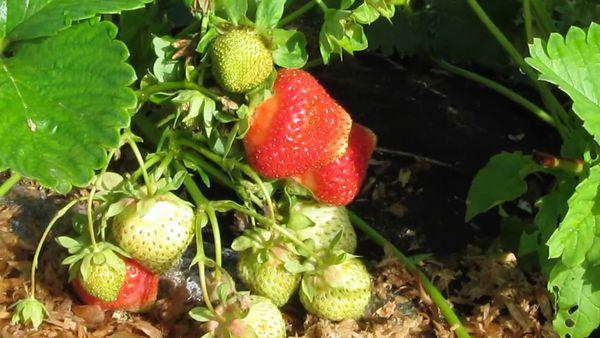

Groundwater should be located no deeper than 70 centimeters. In areas with a higher groundwater level, it is advisable to drain the soil or raise the beds. Growing strawberries in the lowlands is not advisable. The PH of the soil should be 5.0-6.6. If the level of acidity in the soil is minimal, the gardener carries out liming of the soil.
Site preparation for planting
In the fall, the territory is dug up for landing on a shovel bayonet. In the spring, before planting the berries, the soil is loosened by 15 centimeters. Further, the presence of a harmful neighborhood is checked, especially in those places where there are a lot of dense bushes and fresh dung heaps. If "harmful" tenants are found, the territory is treated with ammonia water. Weed grasses are destroyed with herbicides.
Boarding time
Planting time depends on the climate. In spring, strawberries are planted after the ground has received enough heat. Autumn - from August to September.
Watering, weeding and loosening the soil
Watering: within 2 weeks after planting, the land is watered every day, then once every 2 days. Then watering is carried out depending on the weather.
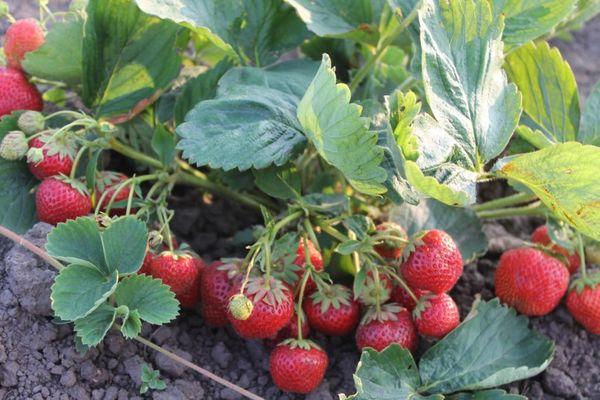

Weeding is very important to Salsa.The soil must be periodically loosened so that the plant develops well and does not overgrow with weeds. It is also important to loosen the soil immediately after planting.
Mulching strawberries
In some regions, there is no snow in winter, so the ground freezes over. To prevent strawberries from freezing, the soil must be mulched around the bush itself during preparation for wintering. For this, straw manure is used, applied in a layer of 5-7 centimeters.
Mulching prevents the soil from drying out. Laying mulch between rows of strawberries helps protect the rhizomes. In the south, in the summer, the plant suffers from extreme heat. Therefore, many gardeners from spring sow sorghum backstage between the rows. It also helps to increase the yield of this variety. You can mulch Salsa with needles, sawdust, straw.
Fertilization
When feeding, fertilize the plant should be no closer than 5 centimeters from it. Remember:
- Enough 4 dressings: 14 days after Salsa was planted, superphosphate (30) grams, wood ash 0.5 cups are diluted in 10 liters of water.
- When the plant blooms: the mullein is diluted in water 1: 6; chicken droppings - 1:20. All this is insisted for 7 days. Ash is also added - 0.5 cups.
- Mullein + water (soaked) 1: 6 + ash (0.5 cups) + superphosphate (50 grams) + 20 liters of water.
- Mullein is bred in a ratio of 1: 6, chicken droppings - 1:20. It is insisted for a week. Ash is also added.
See also
How you can increase the yield of strawberries in the open field, the best waysRead
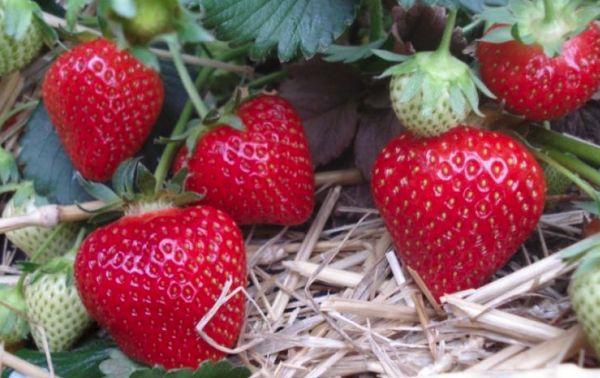

Testimonials
Salsa for the second year surprises with its yield, under the leaves there is just a riot of berries. The taste is sweet and sour, pleasant. While the variety makes me very happy, let's see how it behaves this year, the summer is painfully cold.
The Salsa variety belongs to the intensive cultivation type. This means that the more care you take, the higher the yield, the tastier and larger the berry. Therefore, the trouble of such a strawberry is a joy to the gardener.
Sources:
Treatment against diseases and pests
Strawberry pests are:
- raspberry-strawberry weevil;
- strawberry mite;
- stem and strawberry nematode;
- root weevils.
Diseases:
- gray rot;
- powdery mildew;
- white spot;
- root rot;
- witch's broom.
Treating the plant with chemicals from these pests should not be done often. Processing time: spring-autumn.
- Spring. Plant residues, dead and dried leaves, dead plants are removed. Next, the soil is loosened, fertilizer is added. Strawberries are not always treated against pests, only when the plant requires it.
- Fall. After the harvest is harvested, the bushes are inspected. Immediately weed out bad, diseased and damaged plants. If the strawberry is affected by a nematode, the entire berry must be eliminated. Plants are burned, and the soil is spilled with a solution of ferrous sulfate. Concentration - 5%.
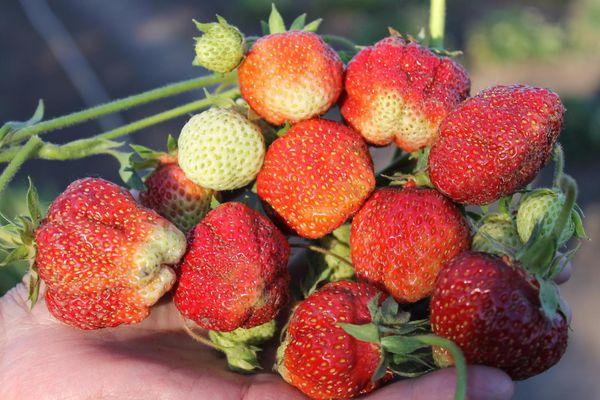

Also, you do not need to give the earth mite a chance to overwinter under the snow. If there are no chemicals at hand, you can use a solution of onion peels. A bucket of water needs 200 grams of husk. Insist 3-4 days.
There are more popular solutions and methods for processing strawberries:
- ammonia;
- iodine;
- hydrogen peroxide;
- Bordeaux liquid;
- boric acid;
- ash;
- hot water;
- the fire.
Here are the main options for protecting against pests and diseases.
Reproduction of the Salsa variety
Strawberries can reproduce in two ways: by a mustache, by dividing the bush.
- Mustache. This is the most common way. Reproduction takes place as follows: rosettes and a root system are formed on the formed whiskers for a certain time. After thoroughly strengthening the roots, the shoot dries up and separates from the mother.
- By division. In this way, only healthy plants reproduce. Before dividing, the bushes are examined for pests and diseases.Reproduction in this way is done in 2-4 years. You can get 5-15 plants from one bush. Each bush should have a "heart" and several roots. The best time for this type of breeding is August.
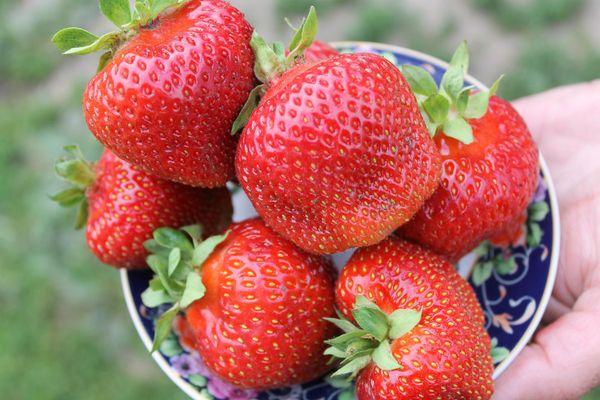

These are the most popular breeding methods. With the correct implementation of all recommendations, the harvest will be plentiful.
How to get an early harvest
Strawberries need to be cared for in order for them to harvest early. In the spring, a layer of earth up to 3 cm thick is removed from the breasts. This will eliminate pests wintering in the upper layer of the soil, as well as warm up the root system.
Advice! Loosening of the beds is mandatory.
After loosening, the soil is sprinkled with sawdust, peat or straw. In spring, plants are fed with nitrogen fertilizer and mullein solution.
Another condition for early ripening of berries is weekly watering. Before flowering, you can spray on strawberries, but then you should switch to root watering.
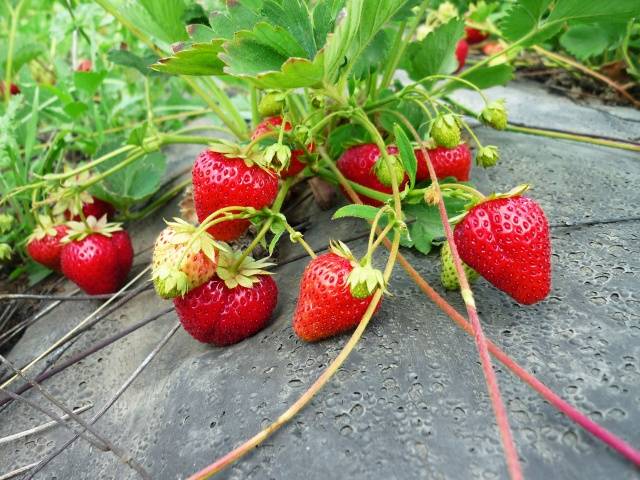

Additionally, plants require the following care:
- weeding of beds;
- elimination of damaged elements;
- sawdust mulching when the first berries appear;
- regular collection of fruits.

